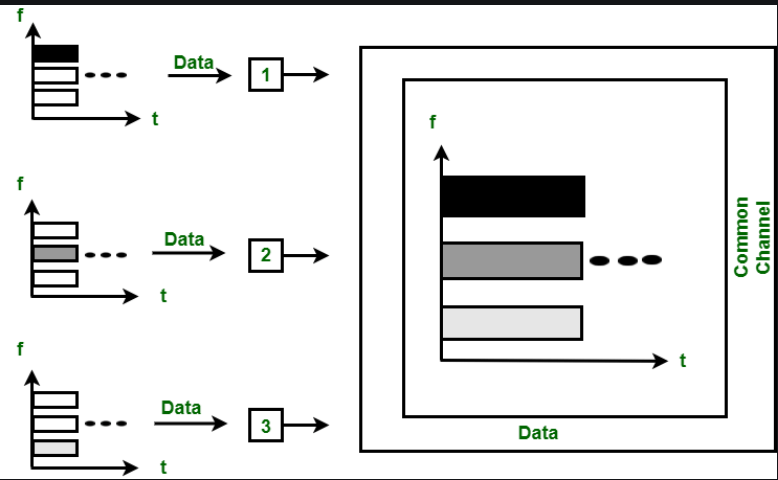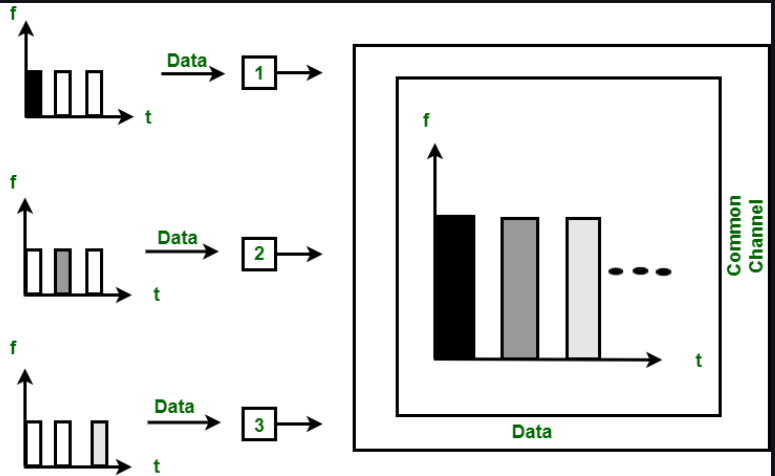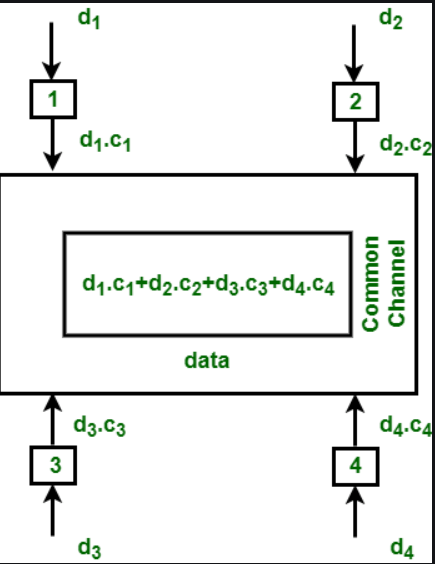Difference between TDMA, CDMA, and FDMA
These are all methods of exchanging and transmitting data. Because of their unique traits and features, they are particularly useful in a variety of contexts. In this article, we will see the specific differences between FDMA, TDMA, and CDMA.
A conventional analogue modulation technique may restrict the amount of data that may be transmitted over any given channel when connecting users that share the same radio frequency (such methods include FM and AM). Each channel can only hold one chat at a time in this situation. Therefore, it requires two users, one for receiving and one for broadcasting.
The ever-expanding needs of today are incompatible with AM (Analog Modulation) because only a limited number of users could occupy a spectrum of it. With a range of modulation algorithms that enable the transmission of more information on a channel, digital radio resolves this problem. In the end, the digital radio devised several ways to support several conversations within a single physical RF channel.
It primarily employs three typical methods to do so:
- FDMA
- TDMA
- CDMA
FDMA (Frequency Division Multiple Access)
FDMA is a specific kind of channelization protocol. This bandwidth is broken up into different frequency bands. Each station has a specific band assigned to it for data transmission, and that band is always set aside for that station, as seen below:
Different stations’ frequency bands are separated from one another by a narrow band of unutilized frequency; this unutilized frequency band is referred to as a guard band since it prevents station interference. It is like the data link layer access approach, in which each station's data link layer instructs its physical layer to create a band pass signal using the data provided to it. There is no physical multiplexer at the physical layer because the signal is generated in the designated band.

TDMA (Time Division Multiple Access)
The channelization protocol known as TDMA divides a channel’s bandwidth among several stations based on the passing of time. Each station has a time slot that they can only use to send data during, which is as follows:
Each station needs to be aware of the beginning and placement of its time slot. Synchronization between various stations is necessary for TDMA. It is a particular type of data link layer access mechanism. Data link layer instructs each station to use the designated time slot at that location.

CDMA (Code Division Multiple Access)
All stations can broadcast data simultaneously in CDMA. Each station may continuously send data across the whole frequency thanks to this. A distinct code sequence divides the simultaneous transmissions into different groups. Each user is given a different code sequence.
There are four stations labelled as 1, 2, 3, and 4 in the illustration below. The code was assigned to the appropriate stations as c1, c2, c3, and c4, while the data was assigned to the appropriate stations as d1, d2, d3, and d4.

Difference between TDMA, CDMA, and FDMA in Tabular Form
| Parameters | FDMA | TDMA | CDMA |
| Full Form | FDMA is an acronym for Frequency Division Multiple Access is FDMA. | TDMA stands for Time Division Multiple Access. | CDMA stands for Code Division Multiple Access. |
| Operation Method | By dividing the bandwidth into sub-channels, FDMA distributes it among numerous stations. | Through the satellite, TDMA merely distributes the transmission time, not the channel. | By allocating a separate code to each slot, CDMA allows for the sharing of both time and bandwidth among numerous stations. |
| Transmission Concept | It divides a single frequency band into numerous unrelated sub-bands. | It divides the data transmitting time into discrete time slots that follow a predetermined or demand-driven schedule. | It uses orthogonal codes to divide a single spectrum among several slots. |
| Codeword | A codeword is not required for the FDMA. | Also lacking a codeword is the TDMA. | In the case of CDMA, the codeword is a requirement. |
| Synchronization | There is no need for synchronisation with FDMA. | TDMA needs to be synchronised. | Furthermore, CDMA doesn't need synchronisation. |
| Number of Data | Low data rates are supported via FDMA. | A medium data rate is supported by TDMA. | A high data rate is supported via CDMA. |
| Advantages | FDMA is reliable, well-known, and relatively straightforward. | TDMA is well-established, completely digital, and versatile. | In addition to being flexible and requiring less frequency planning, CDMA also provides a milder signal handover. |
| Disadvantages | The frequencies that FDMA has access to are a limited resource and are not particularly flexible. | TDMA requires a guard area (for multipath propagation). | CDMA works with incredibly intricate receivers. Power control for the senders and transmitters must be more intricate. |